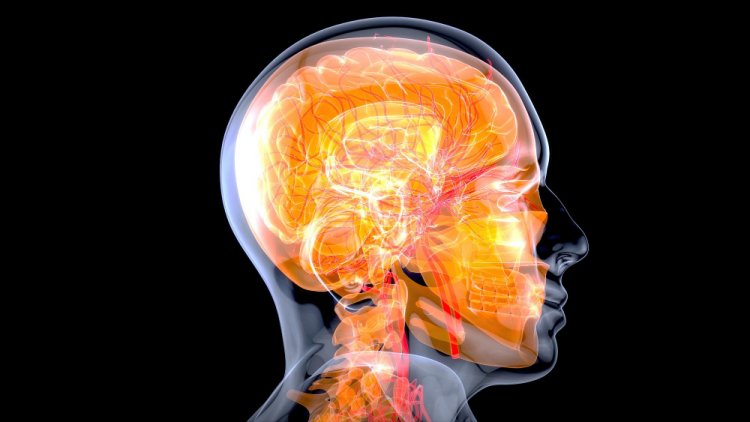In the Line of Fire: Battling the Threat of Aneurysm Rupture
Aneurysms are potentially life-threatening conditions characterized by the weakening and ballooning of blood vessels. They can occur in various parts of the body, including the brain, aorta, and peripheral arteries. Understanding the causes, symptoms, and treatment options for aneurysms is crucial for early detection and effective management of this condition.

Anatomy of an Aneurysm
An aneurysm forms when the walls of a blood vessel weaken, causing it to bulge or balloon outwards. This bulge is susceptible to rupture, which can lead to severe internal bleeding and other complications. Aneurysms can develop in arteries throughout the body, but the most common types include:
- Cerebral Aneurysms: These occur in the brain's blood vessels, particularly at branching points where arteries divide. Cerebral aneurysms are often referred to as intracranial or brain aneurysms.
- Aortic Aneurysms: These affect the aorta, the body's largest artery responsible for carrying oxygen-rich blood from the heart to the rest of the body. Aortic aneurysms can occur in the thoracic (chest) or abdominal (belly) regions of the aorta.
- Peripheral Aneurysms: These develop in arteries outside of the brain and aorta, such as those in the legs, arms, or neck.
Causes of Aneurysms
The exact cause of aneurysms is not always clear, but several factors may contribute to their development, including:
- Atherosclerosis: The buildup of fatty deposits (plaques) in the arteries can weaken their walls over time, increasing the risk of aneurysm formation.
- High Blood Pressure (Hypertension): Chronic high blood pressure can strain artery walls, making them more susceptible to aneurysm formation and rupture.
- Genetic Factors: Aneurysms can run in families, suggesting a genetic predisposition to the condition.
- Trauma: Injury or trauma to blood vessels can weaken their walls and lead to the formation of aneurysms.
- Infection: In rare cases, infections of the blood vessel wall (such as syphilis or tuberculosis) can cause aneurysms.
Symptoms of Aneurysms
Aneurysms often do not cause symptoms until they rupture or become large enough to press on surrounding tissues or nerves. The symptoms may vary depending on the location of the aneurysm but can include:
- Sudden, severe headache: Common in cases of cerebral aneurysm rupture.
- Pain or discomfort: In the affected area (e.g., chest or abdomen) for aortic or peripheral aneurysms.
- Nausea and vomiting: Especially if the aneurysm affects the brain.
- Dizziness or loss of consciousness: In severe cases of aneurysm rupture.
- Pulsating mass: Visible or palpable in some cases of peripheral aneurysms.
Diagnosis and Treatment
Diagnosing an aneurysm typically involves imaging tests such as:
- CT Scan (Computed Tomography): Provides detailed images of the blood vessels and can detect the presence of an aneurysm.
- MRI (Magnetic Resonance Imaging): Offers high-resolution images and may be used to visualize cerebral aneurysms.
- Ultrasound: Useful for detecting aneurysms in peripheral arteries, such as those in the legs.
Treatment options for aneurysms depend on various factors, including the aneurysm's size, location, and the individual's overall health. Options may include:
- Watchful Waiting: Small, asymptomatic aneurysms may be monitored regularly through imaging tests to track any changes in size or condition.
- Medications: Blood pressure-lowering medications may be prescribed to reduce the risk of aneurysm rupture.
- Surgery: Surgical procedures such as clipping or coiling may be performed to repair cerebral aneurysms and prevent rupture. Open surgery or endovascular repair techniques may be used for aortic or peripheral aneurysms.
- Endovascular Therapy: Minimally invasive procedures, such as stent placement or embolization, may be used to treat certain types of aneurysms.
Aneurysms pose significant health risks, but early detection and appropriate management can improve outcomes and reduce the risk of complications. Understanding the causes, symptoms, and treatment options for aneurysms is essential for both healthcare professionals and individuals at risk. By raising awareness and promoting preventive measures, we can work towards reducing the burden of this potentially life-threatening condition.
#AneurysmAwareness #BrainAneurysm #AorticAneurysm #PeripheralAneurysm #HealthAwareness #MedicalKnowledge #PreventiveHealthcare #TreatmentOptions #HealthEducation #VascularHealth #AwarenessCampaign #HealthyLiving #MedicalResearch #HealthcareTechnology #RiskFactors #EarlyDetection #MedicalTreatment #HealthAware #HealthyLifestyle #WellnessJourney
Disclaimer:
The information provided in this article is for educational purposes only and should not be considered medical advice. If you have any health concerns or are experiencing symptoms, it is important to consult with a healthcare professional, such as a doctor or clinic, for proper diagnosis and treatment. Always seek the advice of your doctor or other qualified health provider with any questions you may have regarding a medical condition. Do not disregard professional medical advice or delay in seeking it because of something you have read in this article.
What's Your Reaction?





















